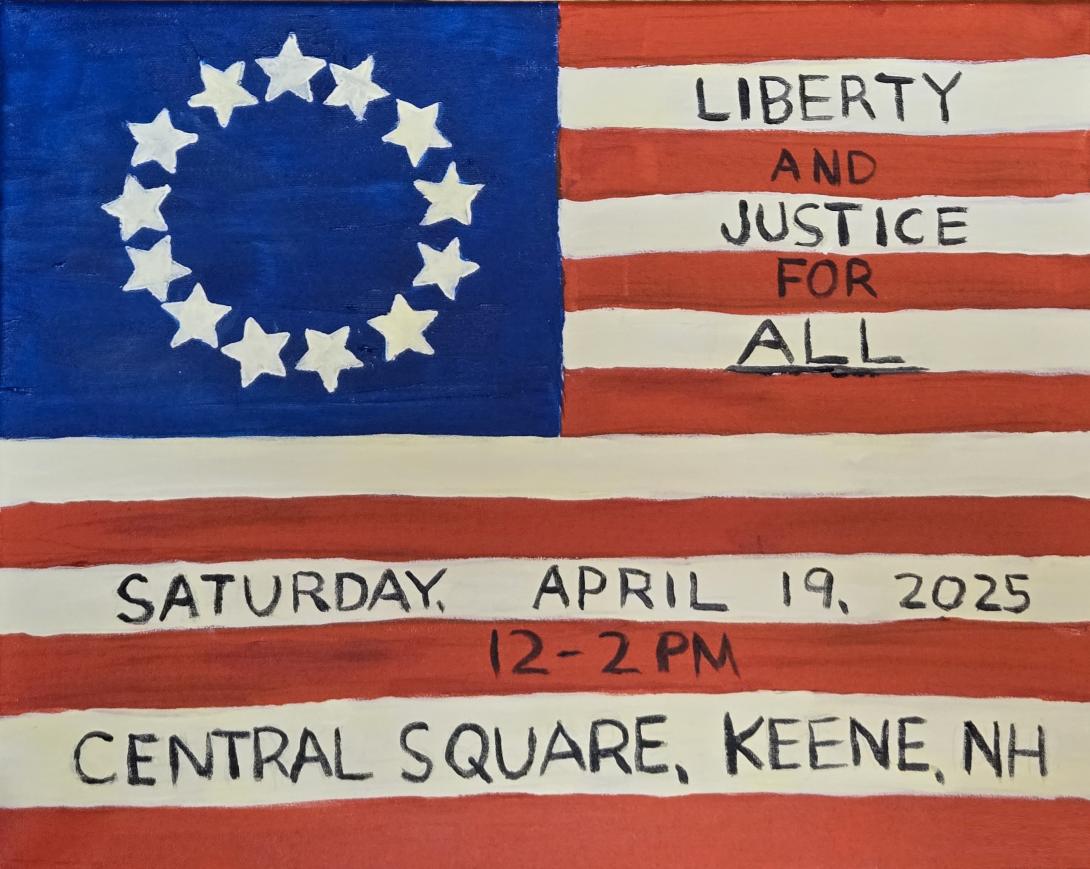1775 - 250 years ago - New England was abuzz…. At least Massachusetts and the distant town of Keene…. Those damned British!
By April 19, the British Royal Governor General Thomas Gage felt things had gone too far and he had to act, as he was under orders to extinguish the growing rebellion. He must have felt that back in London others were undermining his position at court, and no doubt he wanted to report some success rather than let the merchant rumors fly. There were reports of munitions stockpiled in Lexington and Concord, so he seized upon the opportunity. On the night of April 19 at 10:00 pm he sent a force of 800 British soldiers to capture and destroy the weapons. At 10:00 pm! Imagine getting up (perhaps with a throbbing headache from the earlier drinking) and putting on the heavy woolen uniform, donning the belts and hoisting the musket and setting out on the 13 mile dark, cold and wet march to Lexington. And as we know, as they started out, so did Paul Revere, Richard Dawes, and Samuel Prescott, bound to raise the alarm.
(One if by land! Two if by sea! I on the opposite shore will be!)
And raise the alarm they did: To arms! To arms! In Lexington, Capt. John Parker assembled 70 militia on the town green to meet them. They too were roused in the middle of the night, kicking off their bed clothes, pulling on heavy boots in the cold wet weather, their spouses not knowing what they might be off to. At about 5:00 am still in the dark the British arrived the British commander ordered the colonials to lay down their arms. Capt. Parker, recognizing that 800 to 70 on an open field was not a good idea, called on his men to do so. But somewhere a twitchy finger twitched and a shot rang out. The trained, nervous, and, no doubt, fatigued British soldiers fired a volley into the militia, killing eight and wounding ten. The “shot heard round the world” had sounded.
It's still just dawn, and the British moved on to Concord by 8:00 am, marching another 7 miles, but getting more nervous with each step. Here the British sent about 220 men ahead to secure the bridge across the Concord River, controlling movement in the town. Once the bridge was secured (the British commander was no dummy) the rest of the force would head to the Barrett Farm, where the munitions were understood to be stored. But by now the sun was up and so were the colonials, and a force of about 400 had assembled on high ground overlooking the bridge. They could see some smoke rising from the other side of the river, and their commander Joseph Hosmer called out that the British were burning the town! (They weren’t but it was a good motivator.) As the colonials started across the bridge the British opened fire, and the militia on the hillsides returned very effective volleys, given their advantaged position.
The British commanders realized that after having been marching for almost 12 hours and encountering growing resistance it would not be a good day, so they ordered return to Boston. Another 20 miles to travel to get to safety! Unfortunately for them by now militias all over the countryside had arrived along the entire road back to Boston and the retreat became a rout. The 800 that started out suffered 73 killed, 174 wounded and 26 missing. All told the British soldiers lost more than 10% of their force, and carried the wounded back. Overall, they traveled about 40 miles under difficult circumstances, to say the least. Not a motivating day for troops that made it back to the ships in the harbor.
Meanwhile, a messenger dispatched from Concord arrived in Keene on the morning of April 20. Determined to support the cause, Isaac Wyman formed a force of twenty-nine men and himself, and they marched out at sunrise on the 21st. It took three days to reach Concord, marching 64 miles through the wet and cold and muddy April. Shooting was over, but they eventually did reach Boston and became part of the larger force. Overall, about 1000 men from New Hampshire journeyed to Boston for the fight.
The colonials were no doubt elated and invigorated, as they began to mass around Boston to drive the British out. But militia against the embedded troops sheltered under shipborne cannon would not work to well – the rebels needed cannon. Where might there be an easy source? Ticonderoga!
Militias in Connecticut and Massachusetts realized this opportunity simultaneously but totally separately. The Connecticut militia was led by Col. Ethan Allen, who along with his “Green Mountain Boys” headed to the great stone fortress at the place between the lakes. (Remember, Vermont did not exist as yet, it was all called Connecticut.) At the same time the frequent hero of the Revolution Benedict Arnold set out with a force from Massachusetts. They ran into each other on May 9 on the eastern shore, and, while no doubt surprised and wary, they determined to work together. Turns out that the fort was only lightly defended and easily taken “in the name of the Great Jehovah and the Continental Congress!” Ethan Allen got the fame and the painting, and Arnold rose in the ranks of the Continental Army, leading the (disastrous) invasion of Canada later in 1775, but continuing heroic deeds at Valcour Island (1776) and Saratoga (1777). Henry Knox managed the cannon transfer back to Boston, to force the issue and drive the redcoats away.
A couple big years of history ahead, for sure! especially for us in the East. Stay tuned.

